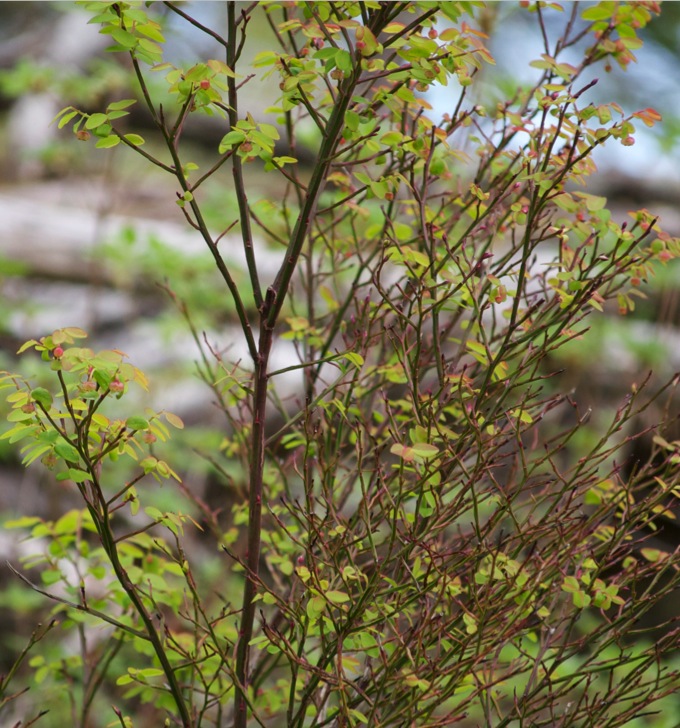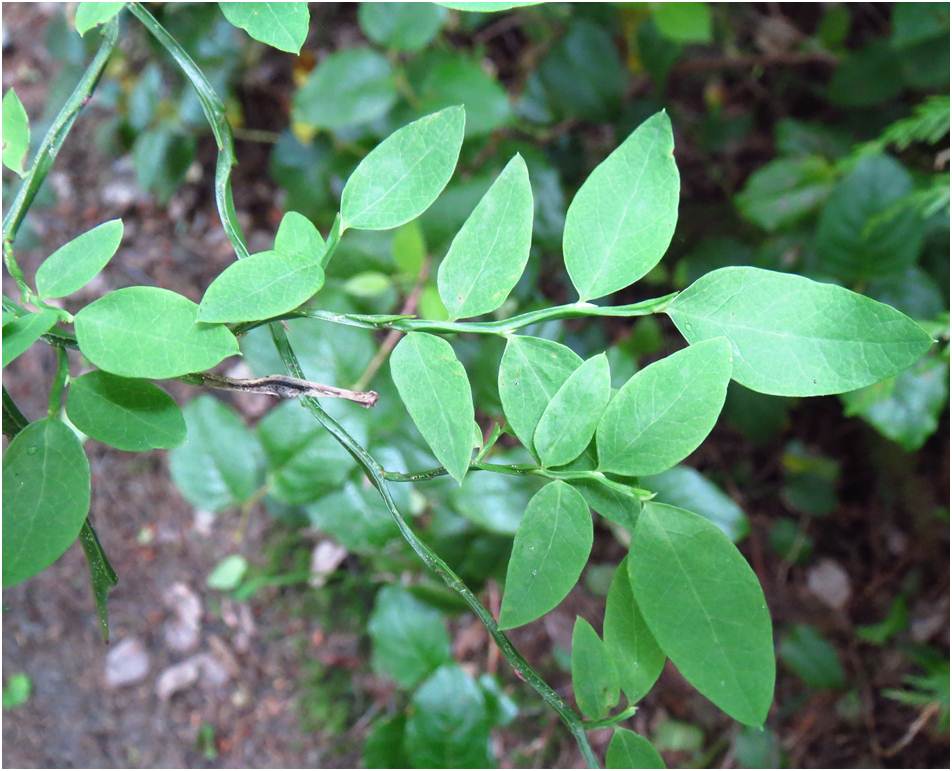Red huckleberry • Vaccinium parvifolium

Photo by Kira Hoffman
|
Identification
Red huckleberry is a deciduous shrub growing to 4 m tall, with vibrant green, smooth, square branches. Its elliptical leaves alternate along stems and are not toothed. When in bloom, its flowers are bell-shaped and range from being greenish-yellow to pink. The berries are bright red and edible, yet some might find them a tad sour.
Habitat & Range
Red huckleberry occurs in canopy gaps or edges of coniferous forests at low to middle elevations, particularly on decaying stumps or logs. Its range goes from southern Alaska to northern Oregon.
Intriguing Info
These berries were a multipurpose staple to coastal First Nations; they were used as fish bait, dried into cakes, made into juice, or simply eaten fresh off the shrub. This University of Alaska Fairbanks publication provides information on storage and preparation of red huckleberries, as well as many delicious-sounding recipes.
Red huckleberry is a deciduous shrub growing to 4 m tall, with vibrant green, smooth, square branches. Its elliptical leaves alternate along stems and are not toothed. When in bloom, its flowers are bell-shaped and range from being greenish-yellow to pink. The berries are bright red and edible, yet some might find them a tad sour.
Habitat & Range
Red huckleberry occurs in canopy gaps or edges of coniferous forests at low to middle elevations, particularly on decaying stumps or logs. Its range goes from southern Alaska to northern Oregon.
Intriguing Info
These berries were a multipurpose staple to coastal First Nations; they were used as fish bait, dried into cakes, made into juice, or simply eaten fresh off the shrub. This University of Alaska Fairbanks publication provides information on storage and preparation of red huckleberries, as well as many delicious-sounding recipes.
References
Pojar, J. and MacKinnon, A. (1994). Plants of Coastal British Columbia. Vancouver, BC: Lone Pine Publishing. P. 57.
Authors and editors of page
Kalina Hunter, Kelly Fretwell, and Brian Starzomski (2014).
Pojar, J. and MacKinnon, A. (1994). Plants of Coastal British Columbia. Vancouver, BC: Lone Pine Publishing. P. 57.
Authors and editors of page
Kalina Hunter, Kelly Fretwell, and Brian Starzomski (2014).






